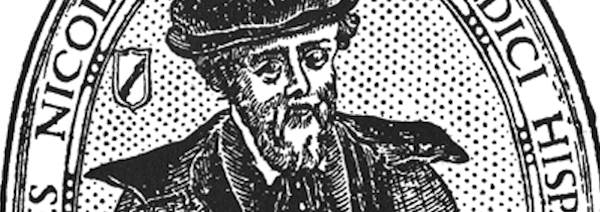Garcia de Orta and Nicolás Monardes, et al., Lyon, 1602 (Bibliotheca Nacional de Portugal)
In February 1664/5, Lister continued his pharmacological reading, turning to Orta and Monardes’ work. He later indicated he also read ‘Christ: de la Coste.de mesme’ a reference to Christophe de La Coste, whose work was also contained in the Histoire des drogues.
Whilst the increased publication of works by Pliny and Dioscorides in the sixteenth century stimulated interest in natural history and materia medica, the influx of new species of flora and fauna from the New World published in travellers’ accounts also led to new medical applications and additions to the traditional pharmacopeia.
The Histoire des drogues espiceries was one of best compilations on Eastern spices and drugs. Garcia De Orta (1501/2-68) had been a physician with the Portuguese navy in Goa, having first written Colóquios dos simples e drogas he cousas medicinais da Índia or Conversations on the Simples, Drugs and Medicinal Substances of India (1563). The work was translated and spread across Europe, and it was earliest analysis of Indian medicine by a European. Monardes (1493-1588), on the other hand, was a physician and native of Sevilla, and he never left Spain.
 However, Sevilla had a trade monopoly with the Americas, and he could thus become familiar with their medical simples. The Spanish crown created institutions such as the Council of the Indies and the Casa de la Contratación to facilitate the distribution of new knowledge from their colonies in Central and South America. Spanish physicians working in the New World not only verified claims in Pliny and Dioscorides about the medical efficacy of plants, but also provided detailed descriptions of the new plants they encountered to determine if they could treat disease. Cinchona, known as quinine, was among their discoveries, found in the tropical Andes forests of Western South America.
However, Sevilla had a trade monopoly with the Americas, and he could thus become familiar with their medical simples. The Spanish crown created institutions such as the Council of the Indies and the Casa de la Contratación to facilitate the distribution of new knowledge from their colonies in Central and South America. Spanish physicians working in the New World not only verified claims in Pliny and Dioscorides about the medical efficacy of plants, but also provided detailed descriptions of the new plants they encountered to determine if they could treat disease. Cinchona, known as quinine, was among their discoveries, found in the tropical Andes forests of Western South America.

